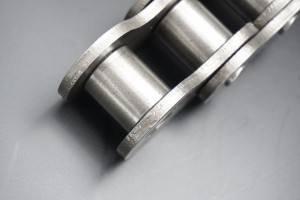When it comes to choosing the right type of chain for your industrial or mechanical needs, understanding the differences between a roller chain and a link chain is crucial. While both chains are used for similar purposes, they have distinct features and functions that set them apart. In this blog, we will explore the key differences between a roller chain and a link chain, and discuss the unique benefits and applications of each.
First and foremost, let’s define what a roller chain and a link chain are. A roller chain is a type of power transmission chain that is commonly used in a variety of industrial applications, such as conveyors, manufacturing equipment, and automotive systems. It consists of a series of cylindrical rollers connected by links and is designed to transmit mechanical power efficiently. On the other hand, a link chain, also known as a standard or straight link chain, is a simple chain consisting of individual links interconnected to form a continuous strand. It is commonly used for lifting, towing, and securing applications.
One of the key differences between a roller chain and a link chain lies in their design and construction. A roller chain features cylindrical rollers that are positioned between the inner and outer plates, allowing for smooth and efficient rotation. This design reduces friction and wear, making it ideal for high-speed and high-load applications. In contrast, a link chain consists of simple, straight links that are interconnected to form a flexible and versatile chain. While it may not offer the same level of efficiency as a roller chain, it is well-suited for a wide range of general-purpose applications.
Another important difference between a roller chain and a link chain is their respective applications and load capacities. Roller chains are commonly used in power transmission systems where high efficiency and reliability are paramount. They are capable of handling heavy loads and high speeds, making them ideal for industrial machinery, automotive engines, and conveyor systems. Link chains, on the other hand, are typically used for lifting, towing, and securing applications where flexibility and versatility are more important than high-speed performance. They are available in various grades and configurations to accommodate different load capacities and working conditions.
In terms of maintenance and longevity, roller chains generally require more attention and care compared to link chains. The presence of moving parts, such as rollers and pins, means that roller chains are more susceptible to wear and fatigue over time. Regular lubrication and inspection are essential to ensure optimal performance and prevent premature failure. On the other hand, link chains, with their simple and robust design, are relatively low-maintenance and can withstand harsh operating environments. Proper cleaning and occasional lubrication are usually sufficient to keep them in good working condition.
When it comes to cost, roller chains are typically more expensive than link chains due to their more complex design and higher performance capabilities. However, the added cost may be justified in applications where efficiency, reliability, and long-term durability are critical. On the other hand, link chains offer a cost-effective solution for general-purpose applications that do not require the same level of performance and precision.
In conclusion, the choice between a roller chain and a link chain depends on the specific requirements of the application at hand. Roller chains are designed for high-performance power transmission applications, where efficiency, reliability, and load-carrying capacity are paramount. Link chains, on the other hand, offer a flexible and cost-effective solution for a wide range of lifting, towing, and securing applications. Understanding the differences between these two types of chains will help you make an informed decision and select the most suitable option for your needs. Whether you require a high-precision roller chain for a manufacturing operation or a durable link chain for a towing application, choosing the right chain is essential for optimal performance and safety.
Post time: Feb-26-2024

